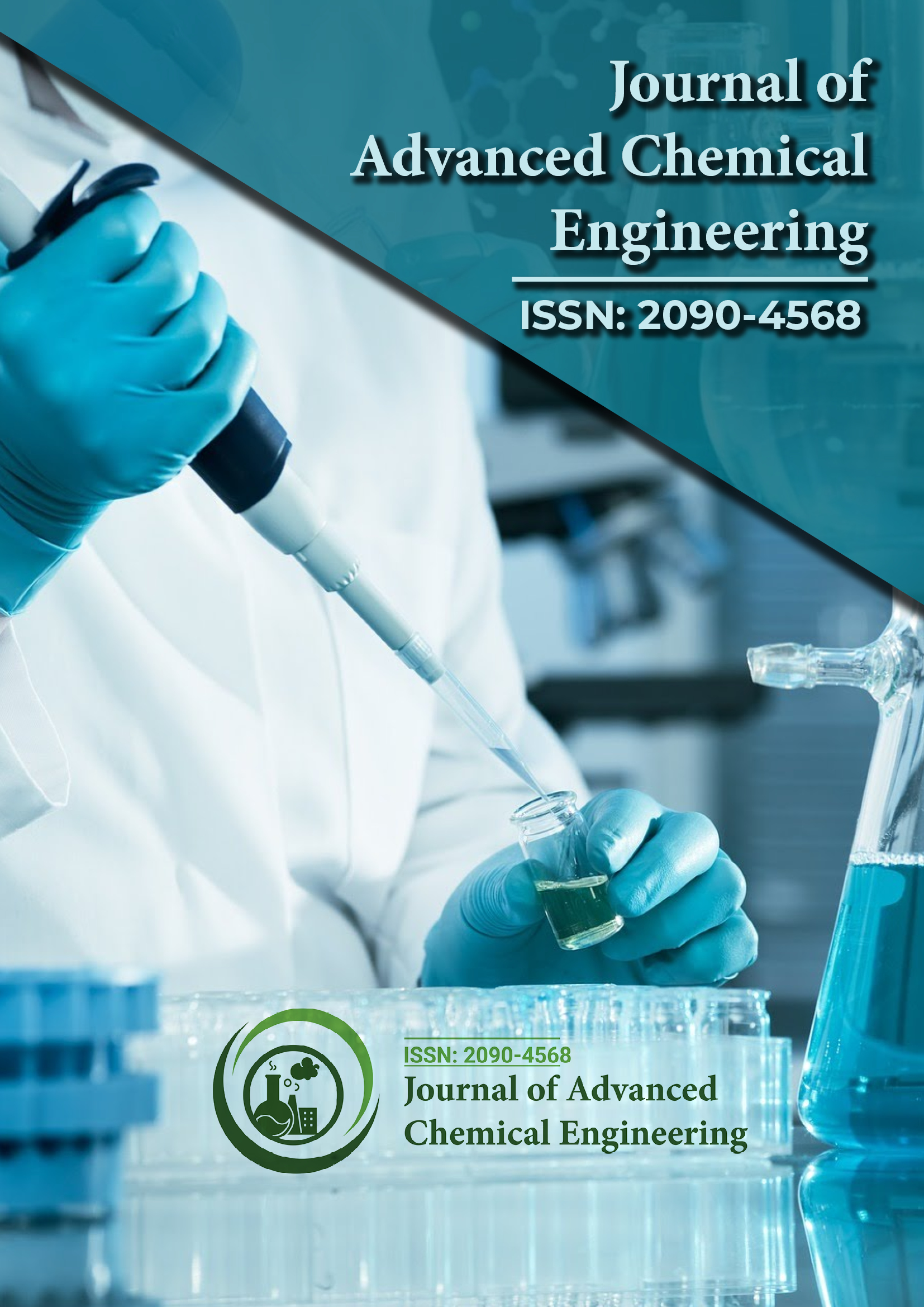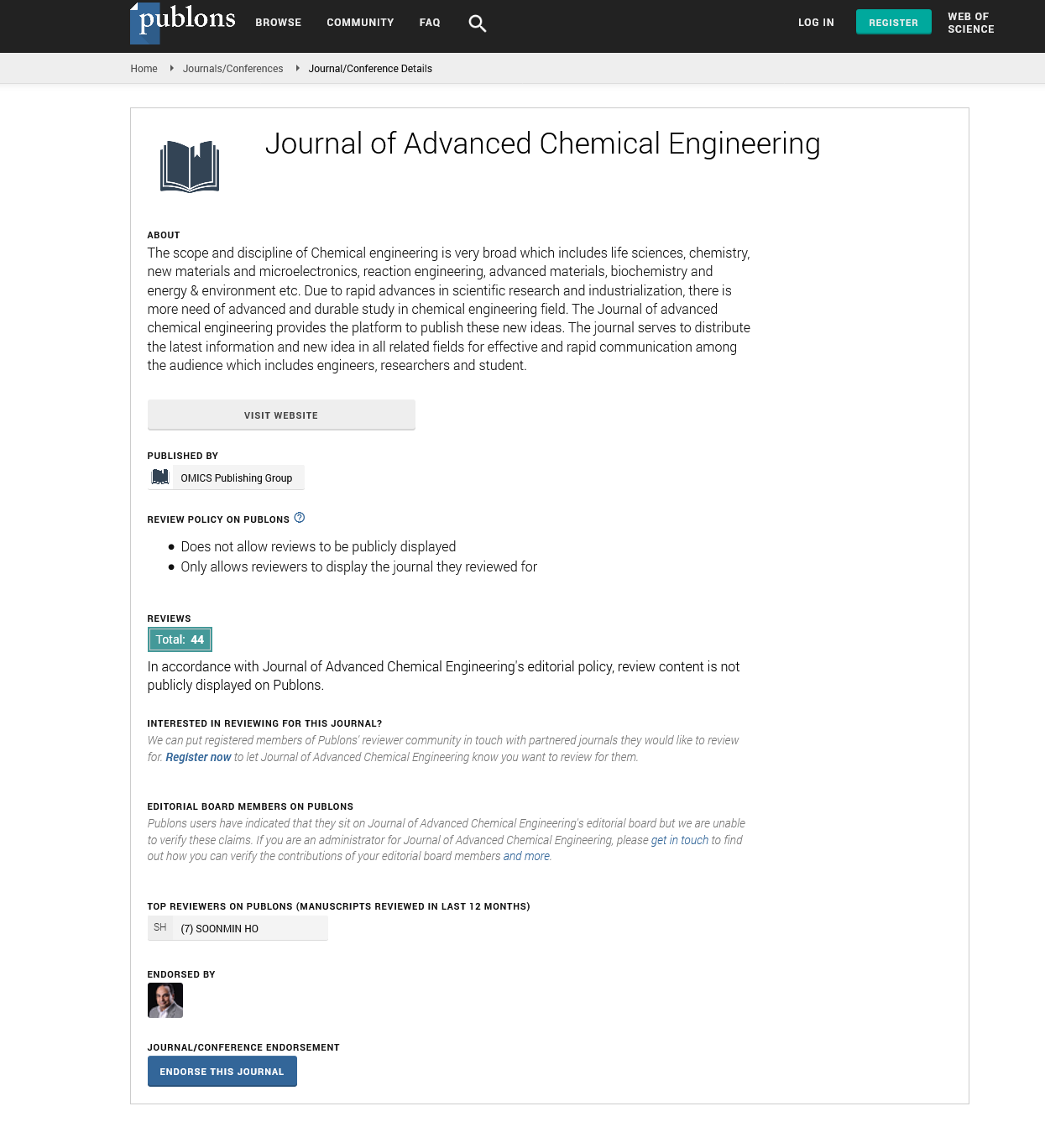Indexed In
- Open J Gate
- Genamics JournalSeek
- Smithers Rapra
- RefSeek
- Directory of Research Journal Indexing (DRJI)
- Hamdard University
- EBSCO A-Z
- OCLC- WorldCat
- Scholarsteer
- Publons
- Geneva Foundation for Medical Education and Research
- Google Scholar
Useful Links
Share This Page
Journal Flyer

Open Access Journals
- Agri and Aquaculture
- Biochemistry
- Bioinformatics & Systems Biology
- Business & Management
- Chemistry
- Clinical Sciences
- Engineering
- Food & Nutrition
- General Science
- Genetics & Molecular Biology
- Immunology & Microbiology
- Medical Sciences
- Neuroscience & Psychology
- Nursing & Health Care
- Pharmaceutical Sciences
Commentry - (2024) Volume 14, Issue 3
Integrating Green and Environmental Chemistry in Education: A Pathway to Sustainable Development
Jack Collins*Received: 30-Aug-2024, Manuscript No. ACE-24-28338; Editor assigned: 02-Sep-2024, Pre QC No. ACE-24-28338 (PQ); Reviewed: 16-Sep-2024, QC No. ACE-24-28338; Revised: 23-Sep-2024, Manuscript No. ACE-24-28338 (R); Published: 30-Sep-2024, DOI: 10.35248/2090-4568.24.14.347
Description
The combination of green chemistry and environmental chemistry education presents a unique opportunity to prepare the next generation of scientists, engineers and policymakers to address global sustainability challenges. As environmental concerns become more pressing, the need for education that bridges these two fields has never been more urgent. Green chemistry focuses on the design of chemical products and processes that minimize the use and generation of hazardous substances, while environmental chemistry deals with the impact of chemicals on the environment and human health. Combining these two areas in educational frameworks can cultivate a more holistic understanding of chemical processes and their long-term consequences, fostering innovative solutions to environmental problems.
One of the main reasons for integrating green chemistry and environmental chemistry education is to create a comprehensive approach to sustainable development. Traditionally, these disciplines have been taught in separate silos, with green chemistry emphasizing innovation in chemical design to reduce toxicity and environmental impact and environmental chemistry focusing on the fate and transport of pollutants in ecosystems. While both fields aim for sustainability, they approach it from different perspectives. Green chemistry seeks to design safer and more efficient chemical processes, while environmental chemistry tends to focus more on the consequences of existing chemicals in the environment. Connecting between these fields can provide students with a deeper understanding of how chemical design directly impacts environmental health and ecosystems, allowing for a more integrated approach to solving environmental problems.
Educational institutions play a major role in promoting this integration. By providing interdisciplinary programs or modules that blend green chemistry and environmental chemistry, universities can equip students with the knowledge and tools to innovate and develop solutions that are not only effective but also sustainable. Students need to understand that chemical processes and products should be evaluated not only for their efficiency and economic viability but also for their environmental and health impacts. For instance, teaching students about the Life Cycle Analysis (LCA) of chemicals and products can help them grasp the full spectrum of consequences associated with chemical processes, from raw material extraction to disposal. This broader perspective can guide students toward developing more sustainable and safer alternatives to existing chemical processes and products.
One of the challenges in connecting green chemistry and environmental chemistry education is the disparity in their current curricula. Green chemistry focuses on the principles of designing chemicals and processes that are less harmful to the environment, such as using renewable resources, minimizing waste and designing chemicals that are biodegradable or nontoxic. Environmental chemistry, on the other hand, tends to emphasize the study of pollutants, their environmental pathways and their effects on living organisms. The curricula of these two fields may sometimes conflict in their focus, making it difficult to integrate them into a unified educational framework. However, educators can overcome this challenge by emphasizing how green chemistry principles can directly influence the outcomes studied in environmental chemistry.
Moreover, there is a strong need for practical, hands-on learning experiences that demonstrate the real-world applications of these concepts. Students should not only learn the theory behind green chemistry and environmental chemistry but also have the opportunity to engage in projects that allow them to apply these principles. Laboratory exercises that focus on sustainable chemical synthesis, pollution monitoring, or the environmental fate of chemicals can provide students with tangible examples of how their work can contribute to solving environmental issues. These practical experiences also enable students to understand the complexities of environmental challenges, such as the interdependencies between chemical processes, ecosystems and human health.
In conclusion, connecting green chemistry and environmental chemistry education represents an important step toward creating a more sustainable future. By providing students with a comprehensive understanding of both the scientific principles and environmental consequences of chemistry, we can equip them with the tools to make meaningful contributions to addressing global environmental challenges. This holistic approach to chemical education will undoubtedly play a key role in shaping a future where chemistry serves the dual purpose of advancing technology while safeguarding the environment.
Citation: Collins J (2024). Integrating Green and Environmental Chemistry in Education: A Pathway to Sustainable Development. Adv Chem Eng. 14:347.
Copyright: © 2024 Collins J. This is an open access article distributed under the terms of the Creative Commons Attribution License, which permits unrestricted use, distribution, and reproduction in any medium, provided the original author and source are credited.

